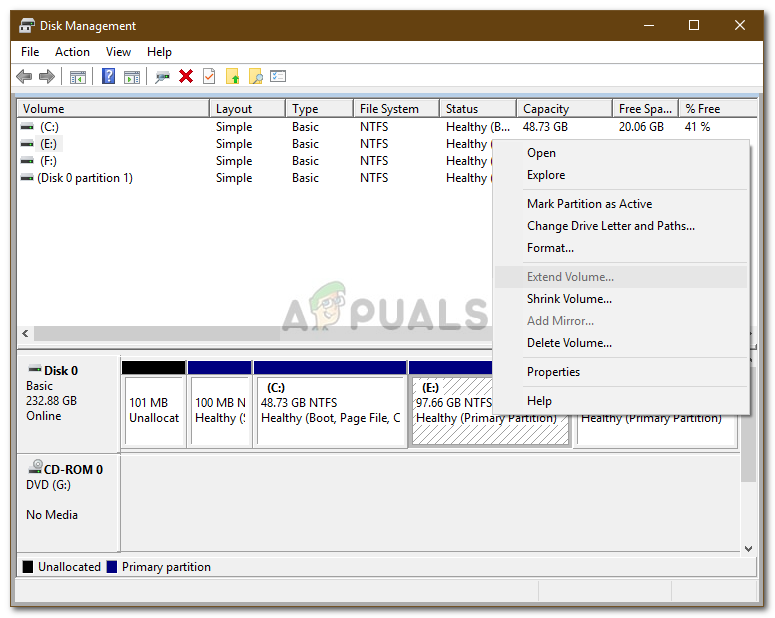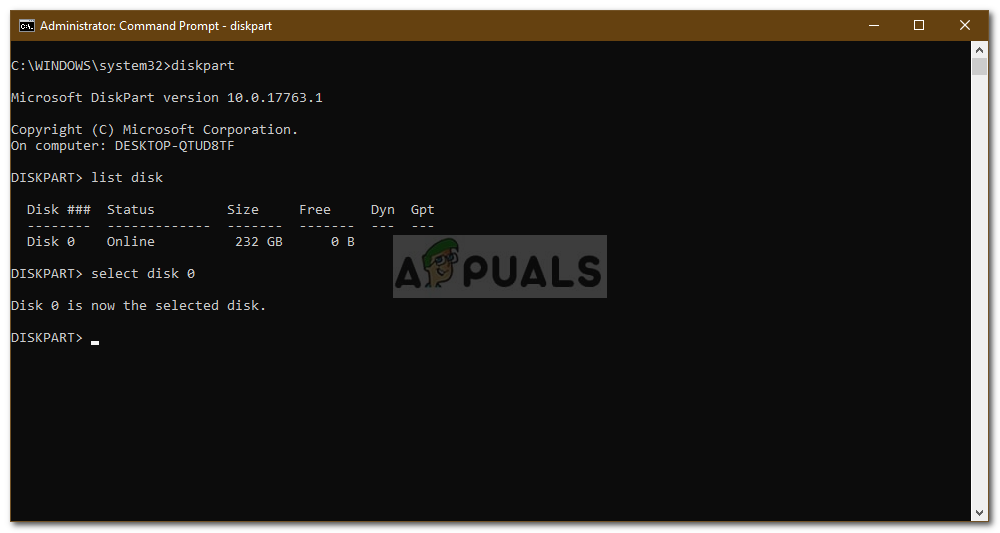Fix: Extend Volume Option Greyed out on Windows
There have been several reports submitted by users which state that the ‘Extend Volume’ option in the Disk Management tool is greyed out. Disk Management is a built-in tool in Windows that you can utilize to maintain partitions on your hard disk i.e create, delete or extend the volumes. However, according to the reports, the ‘Extend volume’ option in Disk Management is greyed out which means users aren’t able to extend a particular volume.

Extending a volume can be really needed, in some cases, when you are almost out of space on your system volume or any other primary partitions. One of the reasons due to which the option can be greyed out is the volume’s format type. Nonetheless, you can more learn more about this issue and how to solve it below.
What causes the ‘Extend Volume’ Option to Grey Out on Windows 10?
Well, if the ‘Extend volume’ option in Disk Management is greyed out for you, it can be due to one of the following factors —
- Partition format type: It is important to note that only NTFS file systems can be extended using the Disk Management utility. Therefore, if the volume that you are trying to extend is in FAT32 format, the option will be greyed out.
- No unallocated space: The primary requisite when extending a volume is unallocated space. If there’s no unallocated space on your hard drive, you won’t be able to extend the volume naturally.
- System volume: If the volume that you are trying to extend is the system volume (where Windows is installed), you will not be able to extend it using the Disk Management tool.
Getting onto the solutions of the issue, you can isolate your problem by going through the workarounds down below.
Note:
Before you get into the solutions, please make sure that you have made a backup of all the files on your partitions as one or two solutions might require you to delete a partition.
Solution 1: Create Unallocated Space
First things first, make sure that you have unallocated space on your system drive to be able to extend a specific volume. If you do not have any unallocated space on your hard drive, it is quite natural that the option will be greyed out. To fix this, you will have to create some unallocated space. In order to create unallocated space, you will have to delete a volume or partition that is not being used or is empty and then extend the volume that you have been trying to.

You can also get some unallocated space by shrinking a partition if you want to avoid deleting it completely. However, it is important to note that if the unallocated space and the volume you want to extend aren’t right next to each other, you still won’t be able to extend the volume. You can learn more about this in the next solution.
To know how to shrink a volume, please refer to this article on our site. However, if you want to delete the partition, please check the instructions provided in solution 2.
Solution 2: Deleting the Partition in Between
If you have unallocated space on your hard drive but you are still not able to extend a volume, this is probably because there are other partitions between the unallocated space and the volume you want to extend. To fix this, you will have to, unfortunately, delete the partitions in between. Here’s how to do it:

- Press Windows Key + X and select Command Prompt (Admin) from the list to open an elevated command prompt.
- Type in Diskpart to open up the DiskPart utility.
- Once diskpart opens up, type in ‘list disk’ and then type ‘select disk X’ to select your disk. Please note that X is the disk number.

Selecting Disk - Afterward, type in ‘list partition’ and press Enter.
- Now to select the partition in between, type in ‘select partition X’ where X is the partition number.
- Afterward, to delete the partition, type in ‘delete partition override’.

Deleting the Selected Partition - Now that you have removed the partition in between, you should be able to extend the volume.
Solution 3: Extending System Volume
If you want to extend your system volume, you will not be able to do so using the Disk Management utility unless you only have one partition on your hard drive. If you have multiple, you can extend the system volume using third-party software.
To learn how to extend your system volume, please refer to this article published on our site.




